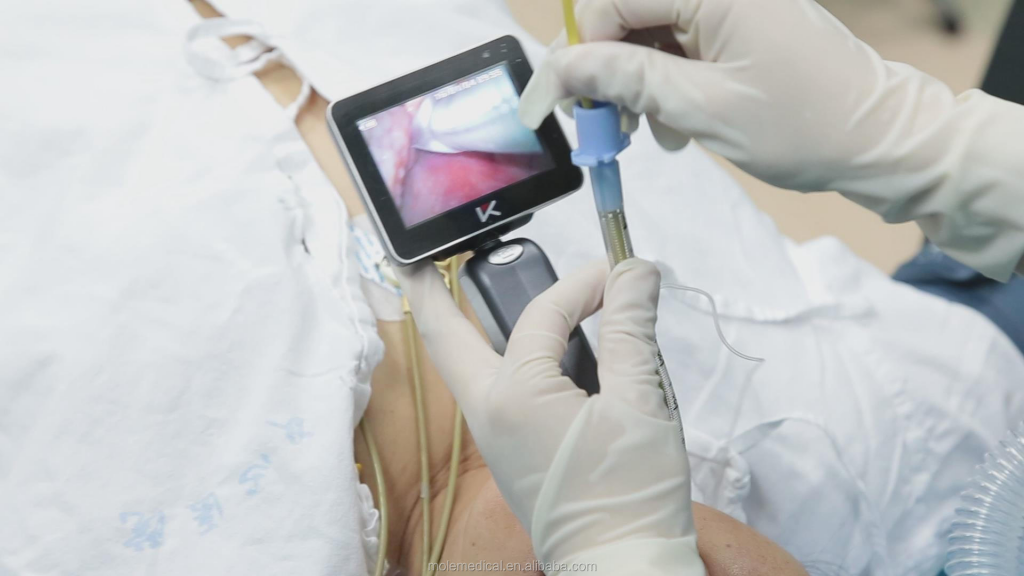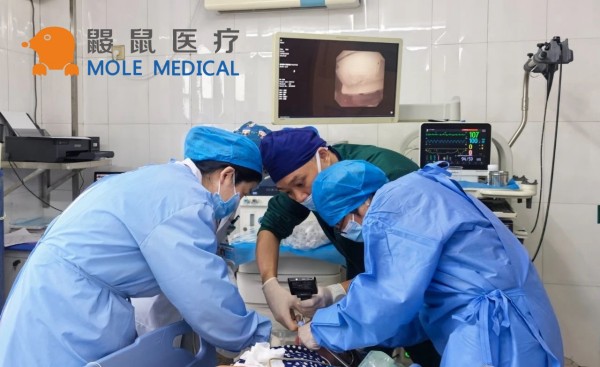Optimizing Airway Management: Types of Video Laryngoscopes
Dec 23, 2023
In recent years, advancements in airway management have significantly improved patient outcomes during intubation procedures. One of the most significant developments is the use of video laryngoscopes, which provide real-time visualization of the airway, enhancing accuracy and efficiency during intubation. In this comprehensive guide, we will delve into the various types of video laryngoscopes available for medical professionals to optimize their airway management techniques.
Key Takeaways:
- Video laryngoscopes provide real-time visualization of the airway for improved accuracy during intubation procedures
- There are various types of video laryngoscopes with unique features and benefits
- Advantages of video laryngoscopes include clearer visualization and ease of use
- Portable video laryngoscopes offer high-definition images of the airway in emergency and field settings
- Specialized video laryngoscope models are available for children, difficult anatomies, and wireless connectivity with other medical devices
Understanding Video Laryngoscopes
Before discussing the options and models of video laryngoscopes, it is crucial to grasp the basics of what they are. Video laryngoscopes are tools specifically created for airway management, thereby providing medical professionals with visual aid throughout intubation procedures. It comes equipped with a built-in camera capable of transmitting real-time images. This technology enables medical practitioners to navigate the airways with higher accuracy.
Unlike traditional direct laryngoscopes, video laryngoscopes provide a clearer view of airway structures, making it easier to guide the endotracheal tube during intubation. In addition, video laryngoscopes eliminate the need for direct line-of-sight visualization, which can often be challenging in certain circumstances.
From portable video laryngoscopes to advanced models with disposable blades and anti-fogging mechanisms, medical professionals have access to a wide range of video laryngoscope options. Getting a good grasp of the basics is essential to optimize airway management, and finding the best model for each unique situation.
Direct Laryngoscopes vs. Video Laryngoscopes

Direct laryngoscopes have been the standard for airway management for many years. However, video laryngoscopes provide numerous benefits that make them a more desirable option.
Video laryngoscopes offer a clearer view of the airway structures, thanks to their ability to transmit high-quality images. This advantage makes it easier to guide the endotracheal tube during intubation, increasing the success rate of the procedure. Unlike direct laryngoscopes, video laryngoscopes do not require direct line-of-sight visualization. This makes it more convenient to use them in difficult situations or patients with challenging anatomies.
By providing a better view of the airway, video laryngoscopes can reduce the difficulty level of intubation procedures. With several video laryngoscope models available in the market, medical professionals can select the option that best suits their needs and optimize their airway management techniques.
Blade Designs and Features
When it comes to video laryngoscope brands, you’ll find a wide range of blade designs and features. Hyper-angulated blades are particularly popular because they provide a better view of the larynx. Some models also have built-in anti-fogging systems to prevent the lens from clouding during use, and others offer disposable blades for convenience.
Advanced video laryngoscopes are constantly pushing the boundaries of innovation to improve intubation success rates. The latest models include features like high-definition imaging and wireless connectivity with other medical devices. As technology continues to evolve, we can expect further improvements in blade designs and innovative features.
Portable Video Laryngoscopes
Medical professionals are increasingly turning to portable video laryngoscopes due to their compact size and ease of use. These handheld devices provide high-definition images of the airway and are particularly useful in emergency and field settings.
Recent years have seen the emergence of several top video laryngoscopes, which offer excellent portability without compromising on performance. With unique features and benefits, these devices are considered some of the best video laryngoscopes available, making them a top choice for healthcare providers.
Video Laryngoscopes for Specialized Situations
In certain situations, medical professionals require specialized video laryngoscopes to perform successful intubation procedures. Pediatric video laryngoscopes allow for optimal visualization of the child’s airway, making it easier to perform intubation procedures. Angulated video laryngoscopes are designed to help access difficult anatomies such as those with a narrow or severely angled airway. For seamless integration with other medical devices, video laryngoscopes with wireless connectivity are used.
By using the appropriate video laryngoscope models, healthcare providers can improve their success rates, reduce the number of intubation attempts required, and minimize related complications.
Conclusion
In conclusion, the advancements in video laryngoscope technology have significantly improved airway management procedures. By providing real-time visual assistance and eliminating line-of-sight obstacles, video laryngoscopes have increased the success rates of intubation, benefiting both medical professionals and patients.
With various blade designs, feature sets, and portability options available, healthcare providers now have access to a wide range of video laryngoscope models. By understanding the different types and choosing the best option for their needs, medical professionals can further optimize their airway management techniques and improve patient outcomes.
Overall, types of video laryngoscopes have proven to be valuable tools in the medical field, and as technology continues to advance, we can expect even more innovative features and benefits to emerge.
Categories
Latest Articles

Disposable Nephroscopes: Redefining Safety & Efficiency in Urology
Introduction The shift towards minimally invasive urological surgery has found a pivotal ally: the disposable nephroscope. As traditional reusable scopes grapple with persistent biofilm contamination risks and soaring sterilization costs, the global medical community is rapidly adopting single-use solutions. This article analyzes the clinical value, technological evolution, and dynamic innovation landscape driving this transformative shift. ... Read more

Disposable Video Laryngoscope Blades: The Ultimate Solution for Preventing Cross-Contamination
In the operating room, as the cold light of a video laryngoscope illuminates a patient’s airway, an age-old medical challenge is being redefined: How can life-saving instruments avoid becoming vectors of infection? Jiangsu MoleMedical drives an innovative safety revolution—replacing reusable devices with single-use, sterile laryngoscope blades that create a pure barrier for critical airways. Traditional video ... Read more
-2.jpg)
FDA & CE Approved Video Laryngoscope: What Makes It Stand Out?
Introduction In high-pressure emergencies and precision-driven operating rooms, video laryngoscopy is revolutionizing airway management. Mole Medical’s FDA and CE-certified technology replaces tactile-dependent “blind intubation” with real-time visual navigation – enhancing safety, accuracy, and clinical outcomes worldwide. Why Certification Matters Mole Medical’s dual certifications validate its global compliance and performance: FDA Clearance: Rigorous validation of safety/efficacy ... Read more

Mole Medical Showcases Advanced Endoscopy Solutions at CMEF Autumn 2025, Driving Global Partnerships
Guangzhou, China – September 26-29, 2025 – The 92nd China International Medical Equipment Fair (CMEF Autumn) concluded successfully on September 29th at the Canton Fair Complex in Guangzhou. Mole Medical Technology Co., Ltd. (Mole Medical) made a significant impact at the event, drawing global medical professionals and partners to its booth (Hall 2.1, Stand Q24) ... Read more

How to Use Disposable Ureteroscopes Safely and Efficiently
In the field of urology, the application of disposable electronic ureteral-kidney pelvis endoscopy catheters is leading the technological innovation in minimally invasive surgeries. According to the 2024 multi-center research data from China’s urology department, among the over 5,000 surgeries included, the patient group using disposable catheters performed significantly better in key indicators such as operation ... Read more



